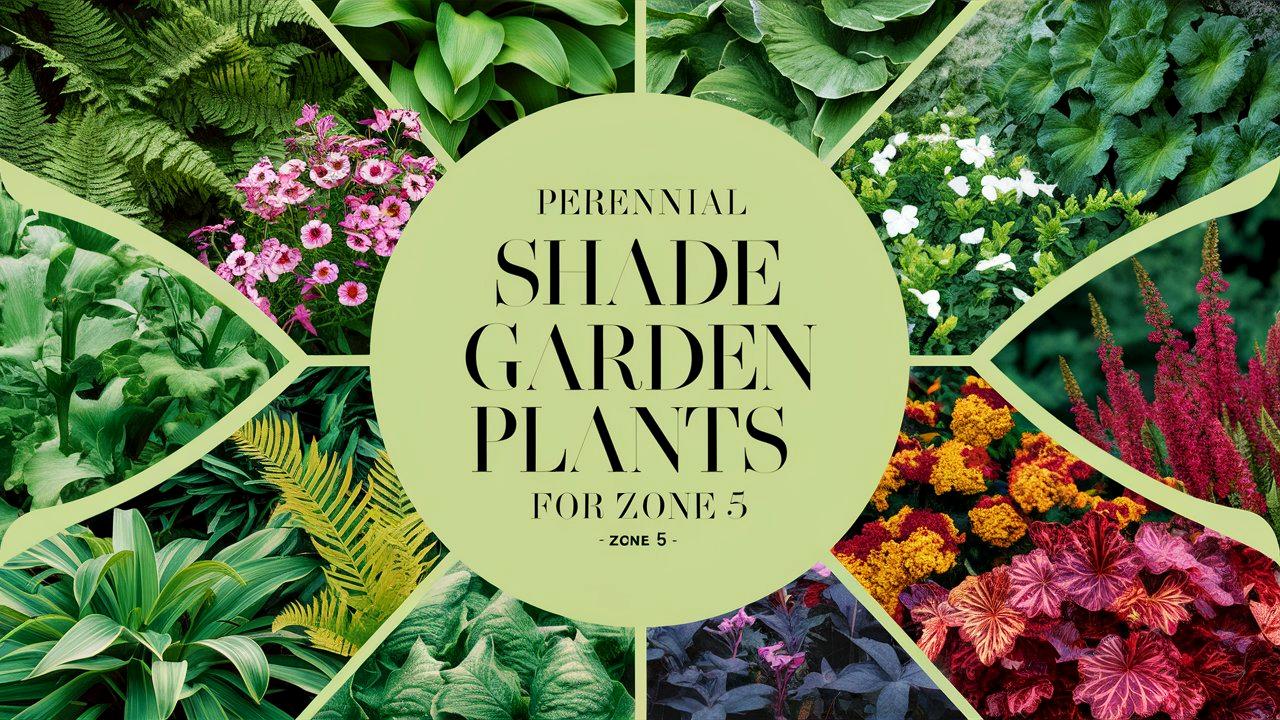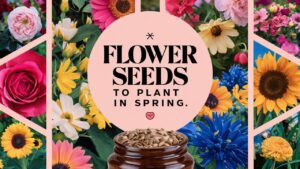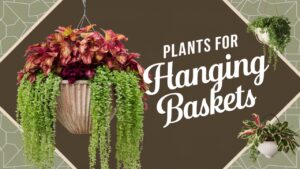Creating a vibrant shade garden can be an enjoyable and rewarding endeavor, especially for those in USDA Hardiness Zone 5, where winters can be chilly but are often balanced by warm summer days. A shade garden opens up a unique opportunity to cultivate plants that thrive in lower light conditions, adding depth and beauty to your outdoor space.
Below, we’ll explore a variety of perennial plants that are well-suited for shady spots in Zone 5, each bringing unique colors, textures, and forms to your garden.
Astilbe
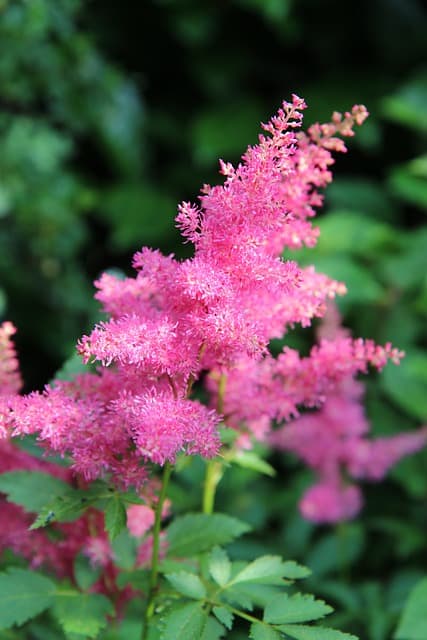
Astilbe entertains with its feathery, plume-like flowers that emerge in shades of pink, white, and purple during the summer months. This perennial thrives in partial to full shade, making it perfect for those darker corners of your garden. Beyond just their blooms, their lush, fern-like foliage provides an attractive backdrop throughout the growing season. To cultivate Astilbe successfully, ensure the soil is consistently moist, as Astilbe thrives in damp environments, often found by streams or in woodland margins.
Barrenwort
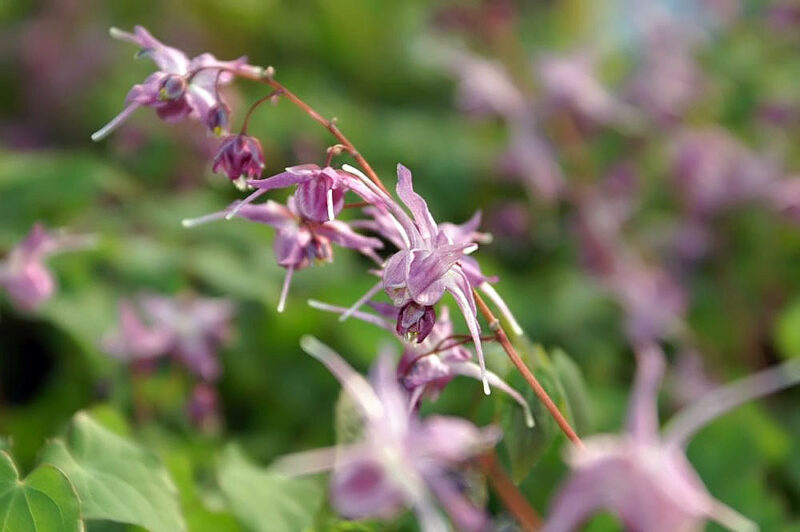
Also known as Epimedium, Barrenwort is a charming, low-growing perennial that’s perfect for ground cover in shady areas. Available in various leaf shapes and colors, it adds interest even when not in bloom. Its delicate, butterfly-like flowers appear in the spring, floating above its heart-shaped leaves. One of the best aspects of Barrenwort is its deer resistance, a notable benefit for gardeners encountering pesky critters. It requires well-drained soil and does well in dry shade, making it an ideal companion for other shade-loving plants.
Boston Ivy
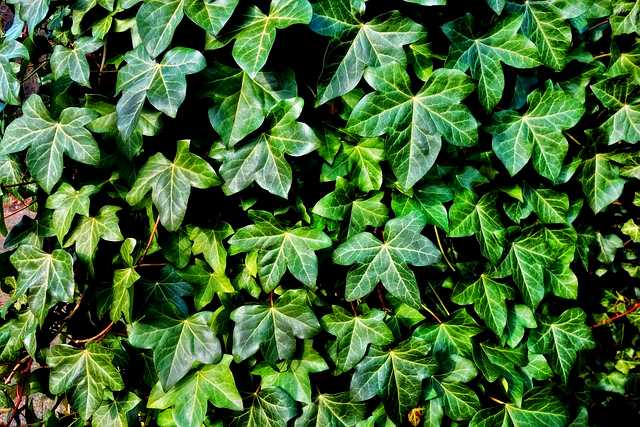
Boston Ivy (Parthenocissus tricuspidata) isn’t just a beautiful climbing plant; it offers year-round interest as it changes colors with the seasons. In spring, its leaves are green, shifting to vibrant reds and purples in the fall. While it prefers some sunlight, it can thrive in shady locations, making it versatile for garden design. Often used to cover walls or trellises, Boston Ivy can create a lush, green tapestry while providing shelter for backyard birds. However, its vigorous growth means you’ll need to keep an eye on it to prevent it from overtaking other plants.
Bleeding Heart
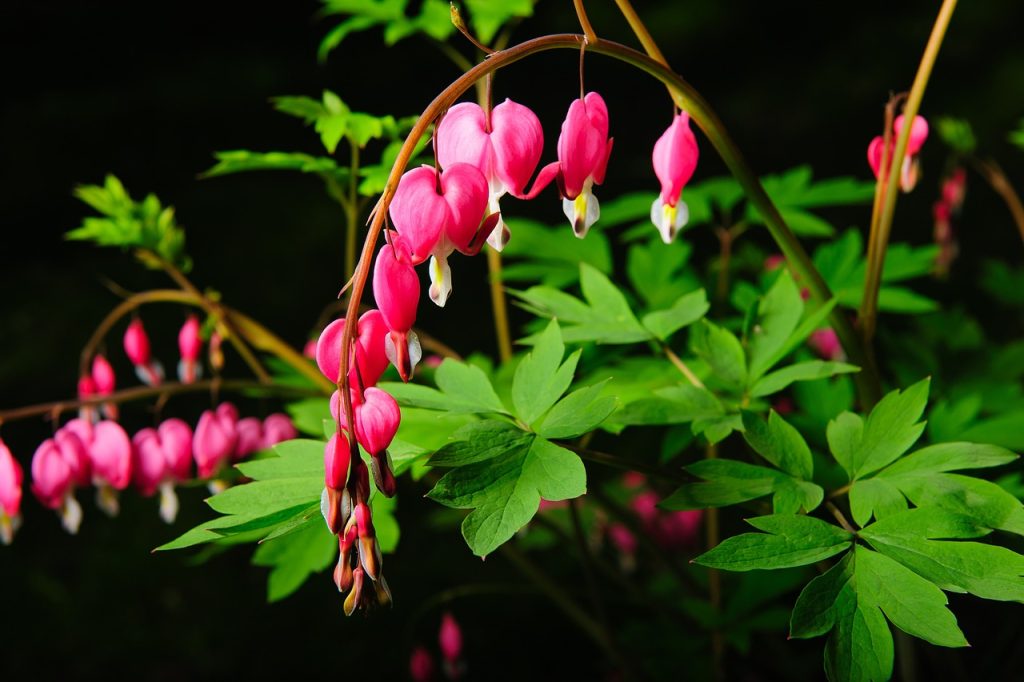
The Bleeding Heart (Dicentra spectabilis) is a quintessential perennial for shaded gardens, enchanting all who see it with its heart-shaped pink flowers that dangle like delicate ornaments. These plants prefer moist, well-draining soil and thrive in cool, shaded conditions. Their foliage, fern-like and feathery, brings an elegant touch to your garden. After flowering, the leaves can remain attractive for the rest of the season, though they may die back in the heat of summer. Planting Bleeding Heart is often a gardener’s initiation into the world of shade-loving perennials.
Bush Honeysuckle
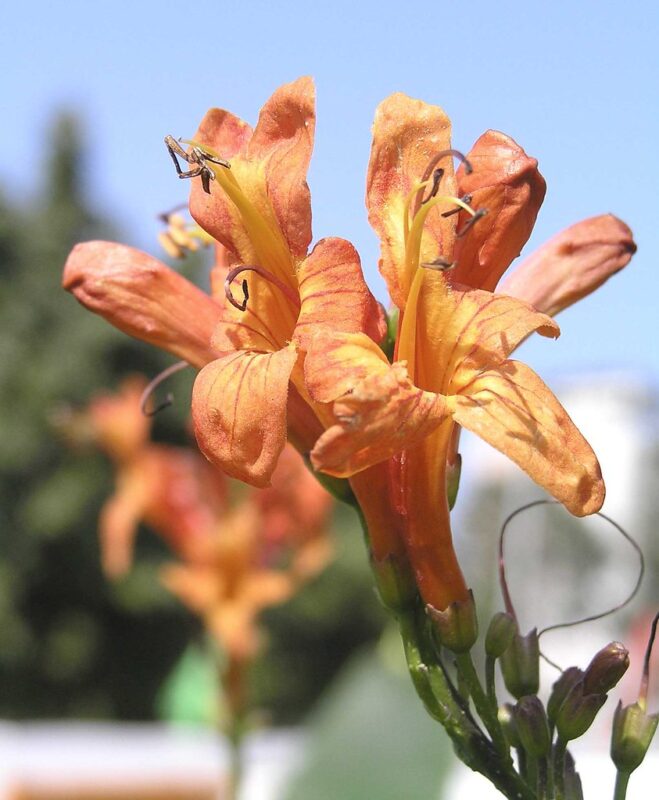
Bush Honeysuckle (Lonicera maackii) is a versatile shrub that flourishes in part shade and can tolerate full shade in Zone 5. This plant brings fragrant blooms in various colors ranging from yellow to pink, which attract pollinators during the flowering season. It offers dense foliage, making it ideal for screening or as a backdrop plant. Bush Honeysuckle’s vibrant berries feed numerous birds in the shelter of its leaves, contributing to wildlife-friendly gardening. When choosing to plant it, remember that some varieties can be invasive, so selecting native species is best for your area.
Climbing Hydrangea
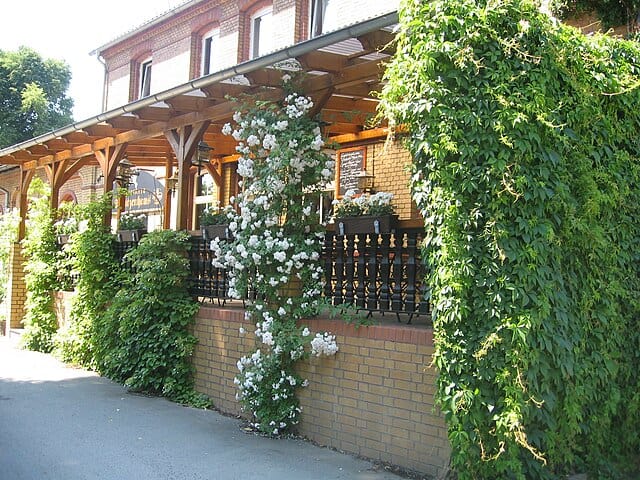
Climbing Hydrangea (Hydrangea anomala petiolaris) is a stunning addition to any shade garden, as it can elegantly climb walls, fences, or trellises. This perennial offers large, white flower clusters that can create a stunning focal point in your garden. Climbing Hydrangeas thrive in rich, well-draining soil and prefer consistently moist conditions. They are slow to establish but can live for several decades, making them a long-term investment. Social gardeners will appreciate how this climbing plant can transform bare vertical spaces into lush greenery.
Columbine
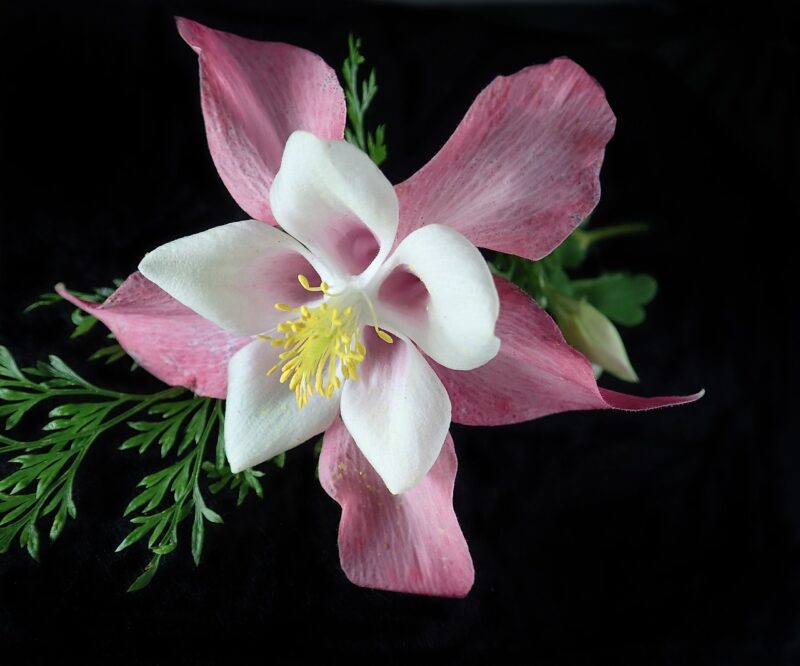
Aquilegia, commonly known as Columbine, offers a whimsical look to your shade garden with its distinctively shaped flowers, resembling flying creatures. Available in a range of colors, including blues, whites, pinks, and yellows, Columbine blooms in late spring, attracting butterflies and other pollinators with its nectar-rich blossoms. These perennials prefer part shade to full shade and can adapt to various soil types but flourish in well-drained, slightly acidic soil. Their unique flowers make them an intriguing addition to any shade flower bed.
Coral Bells
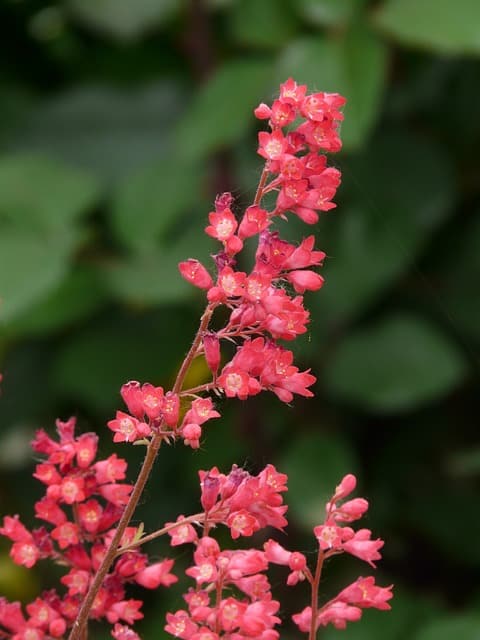
Heuchera, or Coral Bells, provide not just lovely foliage but also delicate flower spikes that can dance above their leaves during the summer. The foliage comes in an array of colors, from silver and chartreuse to deep burgundy, making them ideal for adding color and texture when other plants are not in bloom. Coral Bells prefer partial shade, particularly in the hottest part of the day, and thrive in well-drained soil. They’re excellent for borders or mixed containers as they create distinctive soft contrasts with other shade-loving plants.
Creeping Myrtle
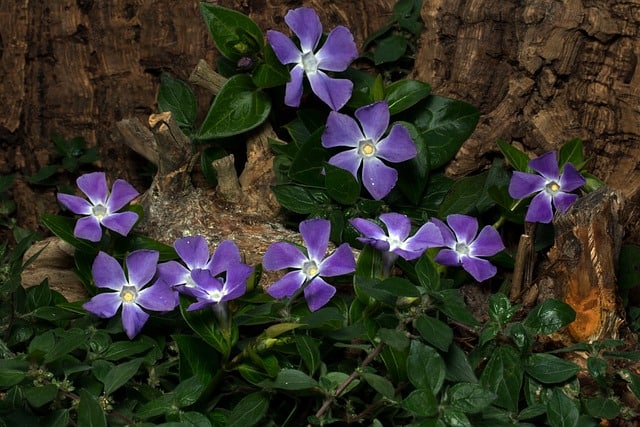
Groundcover plants like Creeping Myrtle (Vinca minor) are ideal for filling in tricky shady areas where grass struggles to grow. With glossy evergreen leaves and blue-violet flowers peering out in spring, Creeping Myrtle is a reliable choice for gardeners looking for resilience. This perennial can spread quite rapidly, so it’s perfect for covering soil and suppressing weeds. While it prefers partial to full shade, it can tolerate some sun if given enough moisture.
Dutchman’s Breeches
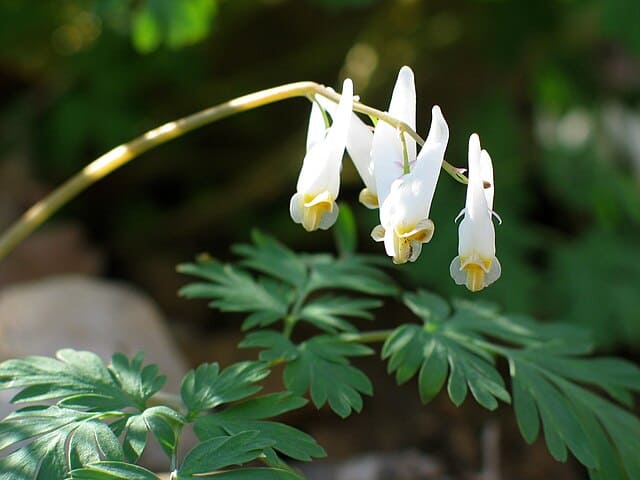
Dutchman’s Breeches (Dicentra cucullaria) is a charming perennial that thrives in moist, shaded woodland settings. Its unique, pouch-like white flowers resemble tiny pantaloons and bloom in early spring. This plant is not only visually attractive but also serves as a food source for bees. It does best in rich, well-drained soils and is a lovely choice for naturalizing under trees. After blooming, its foliage remains attractive until it dies down in summer, making it a delightful addition to any woodland or shade garden.
Foxglove
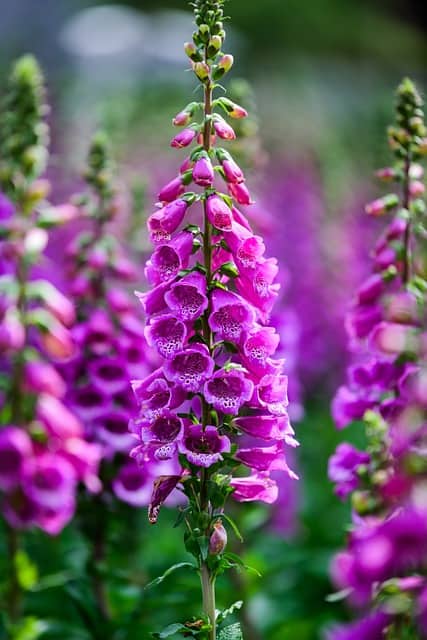
Foxglove (Digitalis purpurea) is a dramatic addition to shady gardens, known for its tall spikes filled with bell-shaped flowers in shades of purple, pink, or white. While it does best in partial shade, Foxglove can tolerate full shade and usually blooms in early summer, providing a stunning vertical element. However, it’s important to note that all parts of the plant are toxic if ingested, which is something to keep in mind if children or pets frequent your garden. For best results, plant Foxglove in fertile, well-drained soil and make sure it has adequate moisture.
Hosta
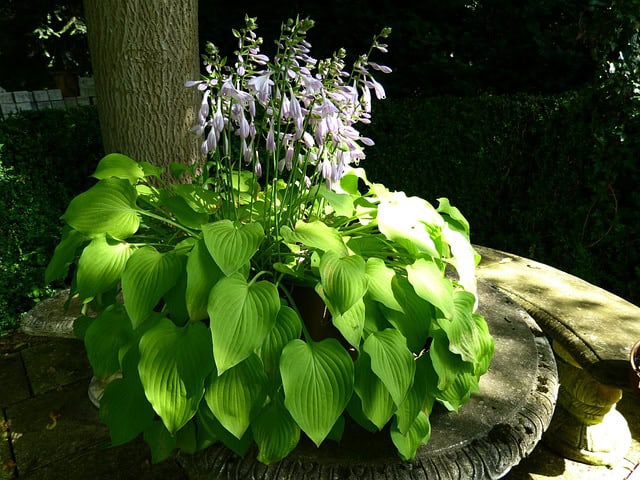
No perennial shade garden is complete without Hosta, often recognized as the quintessential plant for shady spots. Hosta plants charm gardeners with their attractive foliage, available in a multitude of colors, sizes, and shapes. From large, heart-shaped leaves to those with intricate variegation patterns, there is a Hosta variety for every gardener’s taste. They bloom in mid-summer with tall spikes of delicate flowers, adding a nice height contrast. Hostas thrive in moist, well-draining soil and provide an ongoing showcase of color and texture throughout the growing season.
Lenten Rose
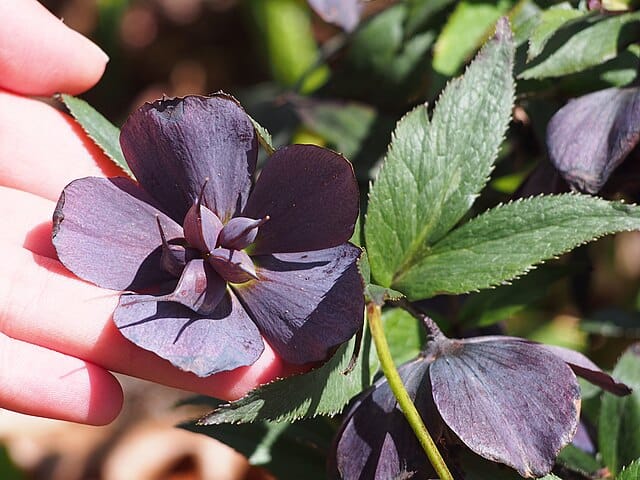
Helleborus, commonly known as Lenten Rose, is a perennial that defies the conventional blooming season by offering flowers as early as winter, making it a beacon of hope amid the cold. These evergreen perennials produce nodding flowers in shades from deep purple to pale pink, often speckled with patterns. They thrive in rich, humid soil and do best in part shade. Lenten Roses are particularly resilient and can thrive in various conditions, bringing beauty and allure to your garden even during the drearier months.
Lily of the Valley
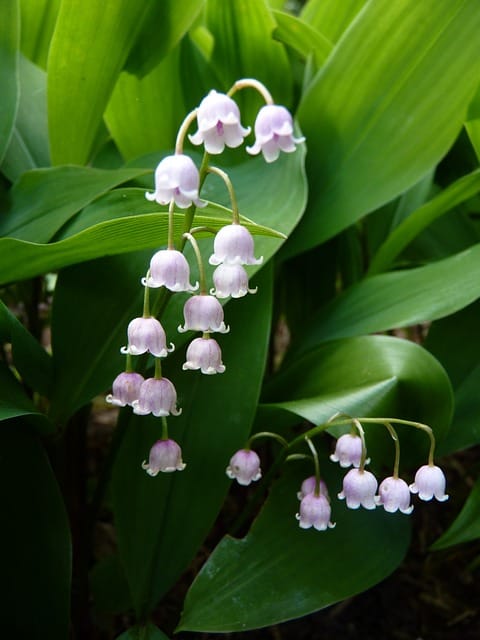
Lily of the Valley (Convallaria majalis) is a beloved choice among shade-lovers, prized for its sweetly scented, bell-shaped flowers that bloom in spring. This perennial is a vigorous spreader, forming lovely colonies that can beautifully fill in garden spaces. Best planted in well-drained soil that remains moist, Lily of the Valley also transitions elegantly into fall when its leaves turn a lovely shade of yellow. Just be aware that it can be toxic if ingested, so garden placement is essential if pets or children are around.
Lungwort
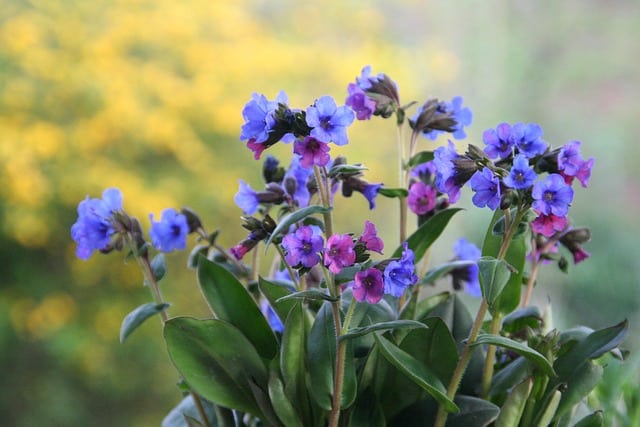
Lungwort (Pulmonaria) presents an early bloom in spring with its clusters of small, unusual flowers ranging from pink to blue. The foliage is equally appealing; spotted leaves create a tapestry of color and texture in shady areas. Lungwort thrives in well-drained, moist soils and prefers partial shade to full shade. Besides their beauty, they are also exceptional at attracting early pollinators, providing essential nourishment when few other plants are flowering. As a bonus, Lungwort is also resistant to deer and rabbits, allowing gardeners a greater peace of mind.
Monkshood
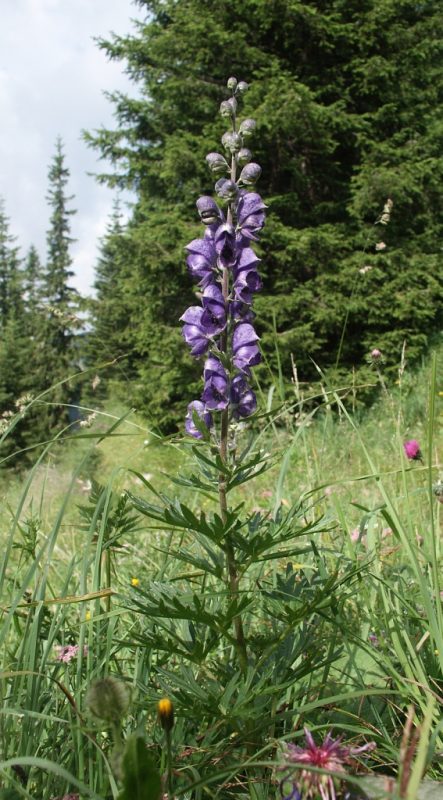
Monkshood (Aconitum) is another dramatic perennial that brings an enigmatic feeling to shade gardening with its tall spires topped with hooded flowers. The blooms can be deep blue to violet, adding a regal touch to the garden. Best suited to partial shade, Monkshood prefers rich, moist soils and can tolerate some sun. However, it’s essential to handle this perennial with care, as it is toxic if ingested. Whether used as a background plant or a focal point, Monkshood can thrive in the depths of your shade garden.
Japanese Pachysandra
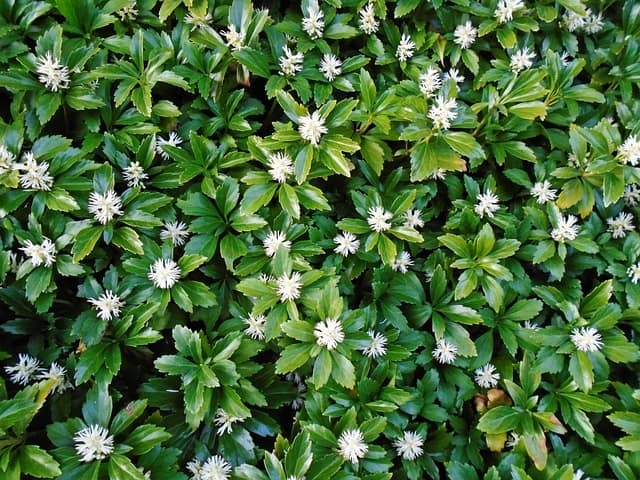
Japanese Pachysandra (Pachysandra terminalis) is an evergreen ground cover that can transform the dullest shadiest spots into lush greenery year-round. Its glossy leaves stay vibrant through the seasons, and tiny white blooms appear in early spring, although they might be overlooked among its best feature: the foliar display itself. Pachysandra is especially tolerant of urban conditions, making it perfect for city gardens. Best grown in moist, well-drained soil, this is an ideal choice for erosion control on slopes and as an underplanting for taller woody plants.
Rodgers Flower
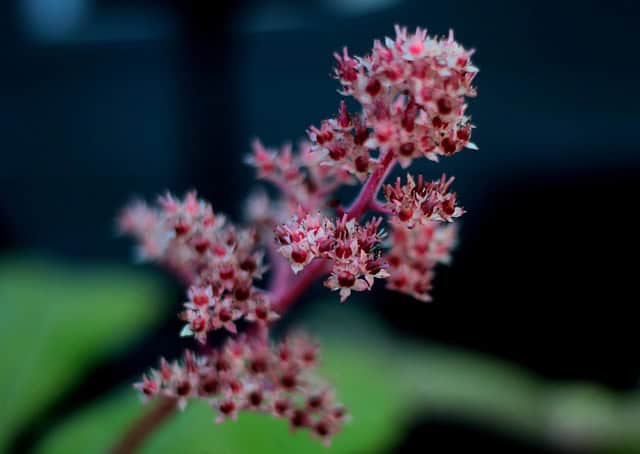
Rodgersia, or Rodgers Flower, is often an underappreciated gem in the realm of shade plants. Its broad, lush leaves create a dramatic presence and can grow up to three feet wide. In late spring and summer, it produces feathery spikes adorned with tiny white or pink flowers, favoring a moist environment. They thrive along pond edges or in rain gardens but can easily adapt to well-drained, shaded garden beds. Their striking foliage will bring a sense of lushness to any garden, making them a sturdy yet beautiful addition.
Trillium
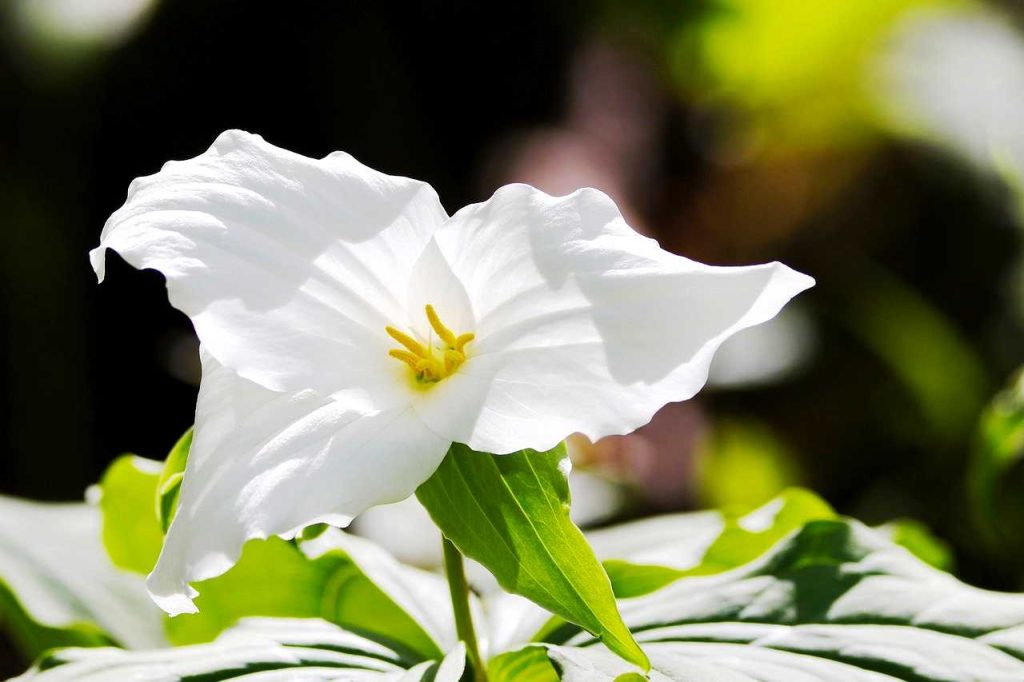
Trillium, often called “wake-robin,” is a wildflower characterized by its three-petaled blooms, which come in various colors—like white, purple, and yellow. Growing low to the ground, these perennials thrive in woodland gardens, blooming in early spring. Trillium prefers well-drained, rich soil and can tolerate a variety of shade conditions. They are a wonderful choice for naturalization, creating charming clumps as they multiply over the years. Trillium is also important for its cultural significance and contributes to the rich biodiversity of woodland ecosystems.
Toad Lily
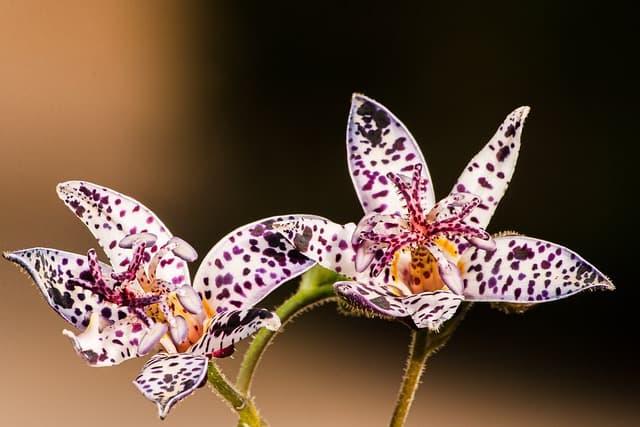
Toad Lily (Tricyrtis) brings an exotic flair to the shade garden with its intricate, spotted flowers resembling orchids. Blooming from late summer through fall, they provide a splash of color when many other plants have withered. Toad Lilies thrive in rich, well-drained soil and can adapt well to various light conditions, including full shade. Their unique blooms will intrigue visitors and add a touch of whimsy to your flower beds. They are relatively low-maintenance, making them an attractive option for beginner gardeners.
Witch Alder
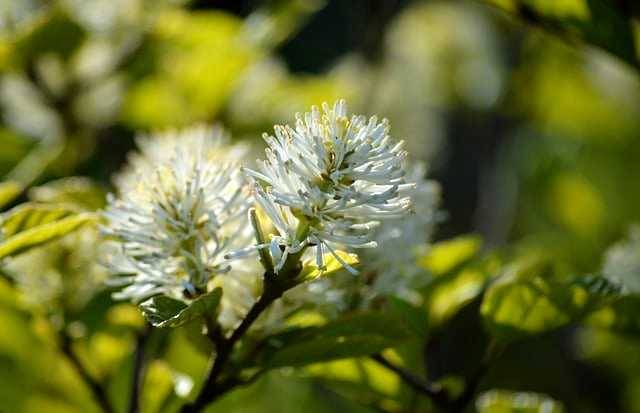
Witch Alder (Fothergilla major) provides charisma with its fragrant, fluffy white blooms that emerge in spring, followed by stunning fall color when its leaves turn vibrant shades of orange, red, and yellow. This deciduous shrub requires some sun but will thrive in partial shade, making it adaptable to various garden settings. Witch Alder prefers moist, well-drained soils. It’s a dynamic addition, offering multi-seasonal interest that complements other shade-loving plants beautifully.


